Helena, MT Pollen and Allergy Report for Summer 2023
Pollen Allergy Trends in Helena, MT
When is pollen lowest in Helena, MT?

February
Lowest month total PPM
Avg. PPM
When is pollen highest in Helena, MT?

April
Highest month total PPM
Avg. PPM
How does pollen in Helena, MT compare to Montana?
Helena has a lower average PPM than the state of Montana.
Helena yearly avg PPM:
Montana yearly avg PPM:
How does pollen in Helena, MT compare to the USA?
Helena has a higher average PPM than the USA.
Helena yearly avg PPM:
USA yearly avg PPM:
Is pollen worse this year in Helena, MT?
Spring 2023 was worse than spring 2022.
Spring 2023 PPM:
Spring 2022 PPM:
Average PPM in Helena, MT
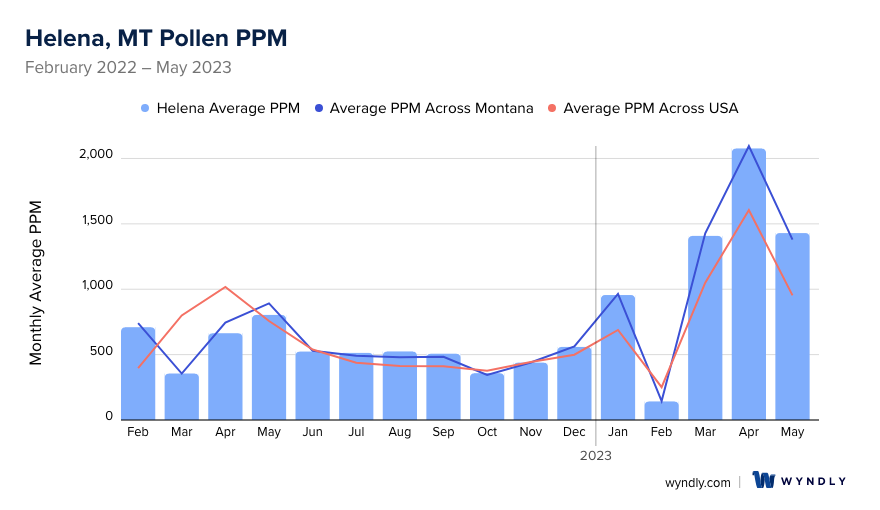
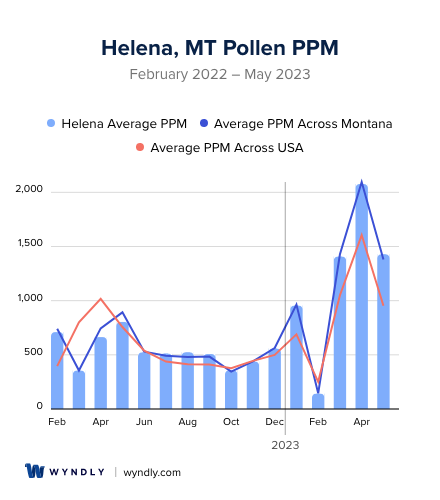
Helena, MT Pollen and Allergy Breakdown by Month
Grass
When is grass pollen highest in Helena, MT?
March has the highest grass pollen in Helena, MT with an average PPM of
When is grass pollen lowest in Helena, MT?
December has the lowest grass pollen in Helena, MT with an average PPM of
Tree
When is tree pollen highest in Helena, MT?
April has the highest tree pollen in Helena, MT with an average PPM of
When is tree pollen lowest in Helena, MT?
October has the lowest tree pollen in Helena, MT with an average PPM of
Weed
When is weed pollen highest in Helena, MT?
September has the highest weed pollen in Helena, MT with an average PPM of
When is weed pollen lowest in Helena, MT?
February has the lowest weed pollen in Helena, MT with an average PPM of
Helena, MT Pollen Monthly Breakdown by Pollen Type
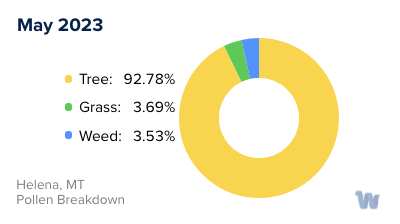
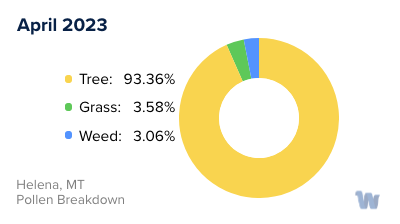
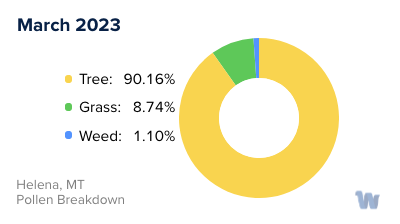
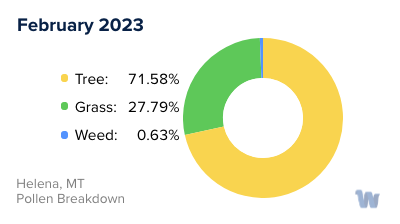
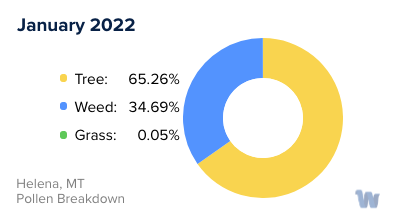
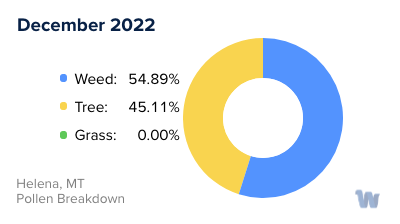
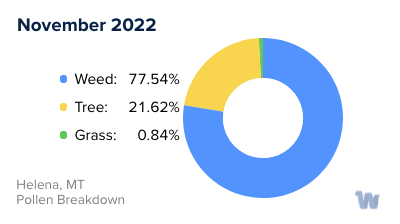
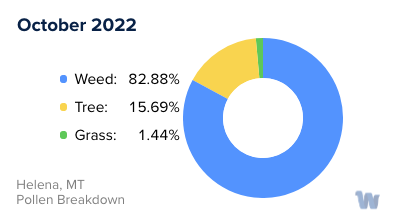
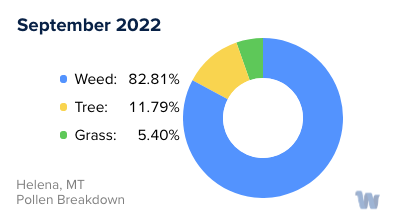
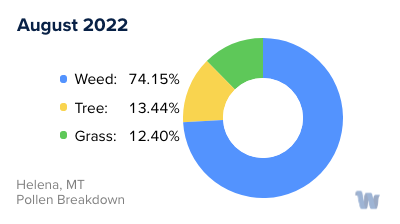
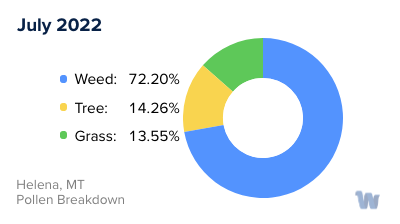
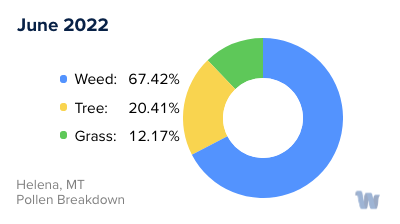
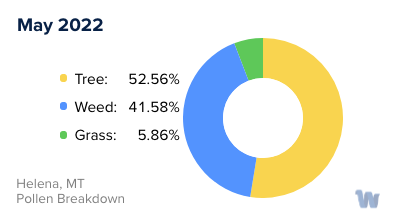
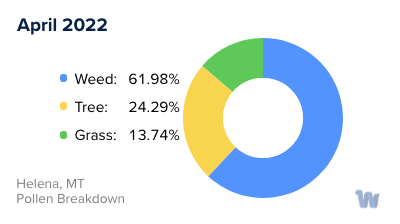
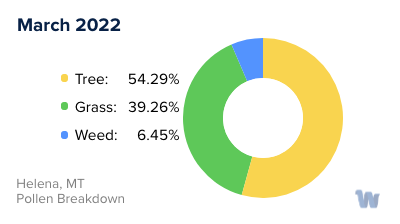
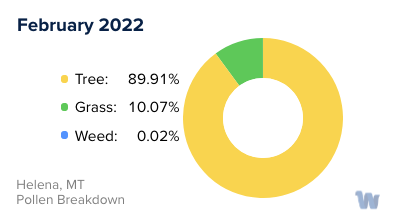
Pollen and Hay Fever in Helena, MT
As the seasons change in Helena, Montana, residents and visitors alike may experience an unwelcome guest: pollen allergies, commonly referred to as hay fever. Helena, nestled amidst stunning landscapes and breathtaking mountain ranges, is not only a city of natural beauty but also a thriving center for various types of pollen-producing plants.
Pollen, a powdery substance produced by certain plants during their reproductive process, can be a real nuisance for allergy sufferers. In Helena, various types of pollen can be found throughout the year, each coinciding with the blooming periods of the plants that produce them.
In the spring, trees are the primary source of airborne pollen in Helena. Cottonwood, oak, and pine trees liberally dust the air with their pollen, causing the noses of allergy-prone individuals to twitch with discomfort. This is also the time when juniper and cedar trees release their pollen, adding to the springtime pollen count.
As spring transitions into summer, grasses take center stage. Helena's beautiful landscapes are peppered with a variety of grass species, including ryegrass and Kentucky bluegrass. These grasses produce a lighter, more fine-grained pollen that can be carried by the wind for miles, making summer a peak season for hay fever sufferers.
In the fall, it is the turn of weeds to add to the pollen count. Ragweed, a common plant in Montana, releases its pollen in late summer and early fall. Its microscopic grains can travel hundreds of miles on the wind, causing the autumnal hay fever symptoms many people experience.
Each season in Helena brings its own distinctive beauty, but also its unique pollen profile. Understanding the types of pollen present in each season can help those with allergies anticipate and prepare for their symptoms, without letting these natural phenomena diminish their enjoyment of Helena's charm. So, whether you are hiking Mount Helena in the spring, picnicking in the lush parks in the summer, or exploring the fall colors in the city, remember, it's not just the beauty that's in the air.

